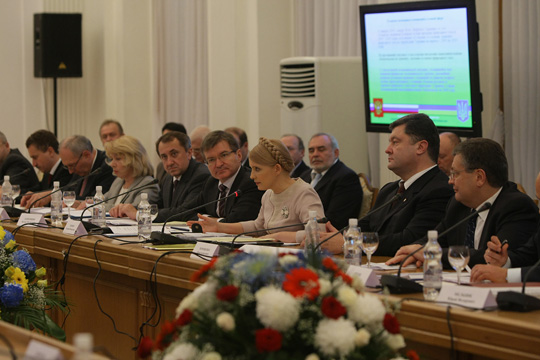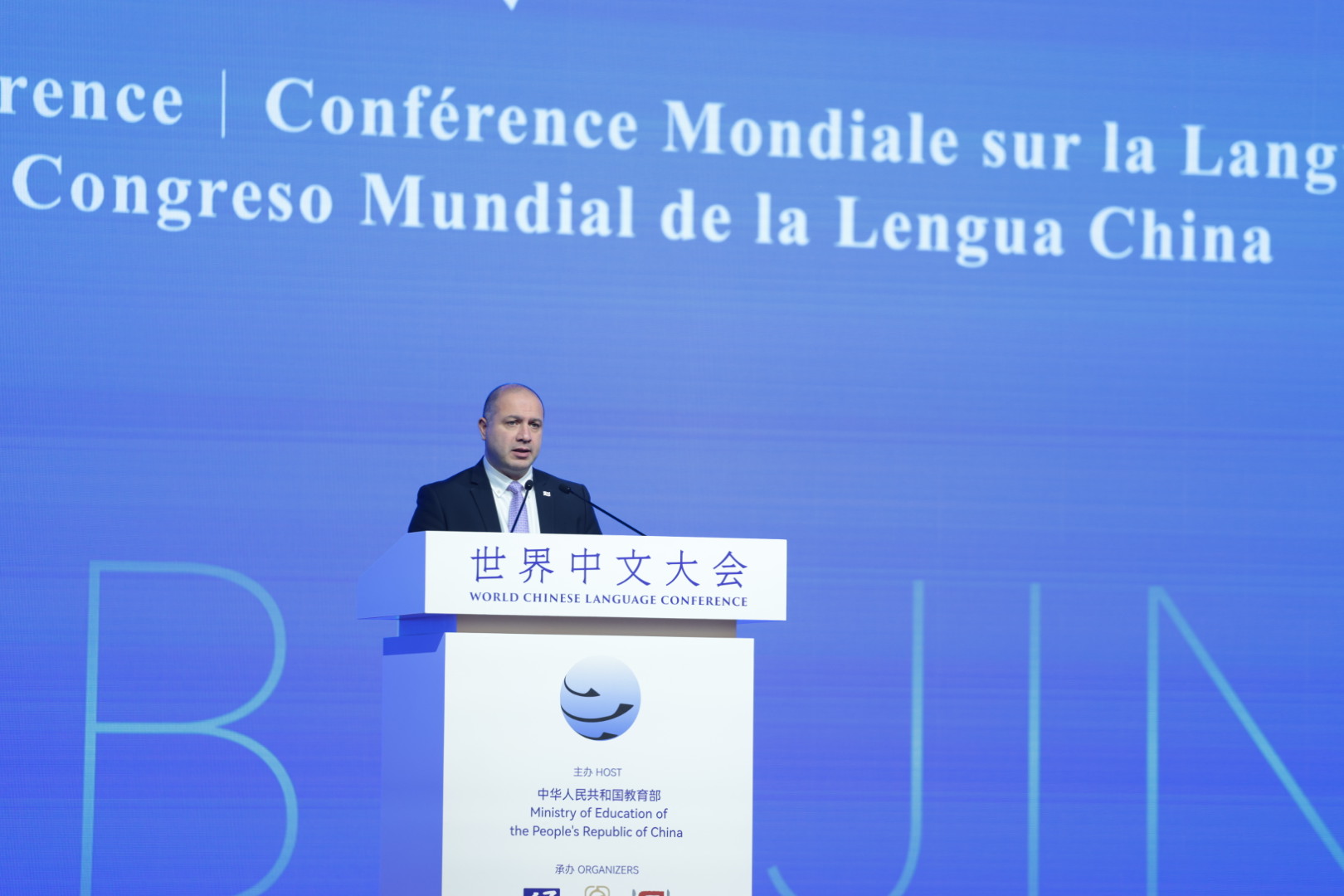
Tymoshenko Reveals ‘Peace Plan’ for Eastern Ukraine as She Ramps up Presidential Campaign to Challenge Poroshenko
Tymoshenko Reveals ‘Peace Plan’ for Eastern Ukraine as She Ramps up Presidential Campaign to Challenge Poroshenko
Ukraine’s presidential campaign is in full swing. Five months out from the election (the first round is scheduled for March 31), it remains entirely unclear who the next head of state will be. Yet, the likeliest contenders are incumbent President Petro Poroshenko and former prime minister Yulia Tymoshenko. The two could face off against one another in a second round, which will take place in April. According to polling released last September, if the elections were to be held in the nearest future, Tymoshenko would take 12.9 percent of the vote, while Poroshenko would finish with 8.4 percent (Censor.net.ua, September 14). The coming election is crucial to Poroshenko as well as Tymoshenko since both candidates have been in politics nearly twenty years and defeat would be difficult to recover from at this point.
Yulia Tymoshenko was the first major candidate to announce her participation in the presidential elections. In June, she started her campaign by launching a summit with thousands of participants in Kyiv called “A New Course for Ukraine” (Dsnews.ua, June 15). Shortly afterward, Tymoshenko and members of her team held several other similar events in the Ukrainian capital, where they introduced different strategies for the economy, politics, defense and other issues that would make up the platform for her presidential race. Notably, on October 30, Tymoshenko presented a “New Strategy for Peace and Security” at an event that gathered hundreds of members of her Fatherland party along with independent experts invited to the discussion (RBC, October 30).
The ongoing war in Donbas (region of eastern Ukraine comprising the Donetsk and Luhansk provinces) remains one of key issues important to Ukrainian voters. According to a July 2018 survey, 50 percent of respondents were ready for some limited compromise with Russia over the status of Donbas. Whereas, 17 percent supported a military operation by the Ukrainian Armed Forces to regain the war-torn region. At the same time, 19.7 percent answered that they were ready to an end to the conflict “at any cost” (Liga.net, July 19). Given this, all of the key presidential candidates in Ukraine have been proposing their own strategies and solutions to the military stalemate in the east. While President Poroshenko has suggested an international peacekeeping operation under a United Nations mandate (see EDM, September 22, 2017; May 24, 2018), Tymoshenko has introduced a wholly different approach.
During her October 30 presentation on a “New Strategy for Peace and Security,” the opposition Fatherland party leader stressed that the “Minsk Two” ceasefire agreement on Donbas, which was signed in February 2015, between Ukraine, Germany, France and Russia, is no longer relevant and needs to be changed to the “Budapest format” of Ukraine, the United Kingdom, the United States and Russia. Under the quadrilateral talks in Budapest, in 1994, Ukraine agreed to become a non-nuclear-weapons state by abandoning the third-largest nuclear arsenal in the world that was in its possession following the breakup of the Soviet Union. In exchange, Kyiv received important security assurances from the other three partners who signed the resulting Budapest Memorandum (Armscontrol.org, July 25, 2017). Moscow flagrantly violated the Budapest Memorandum’s security assurances, including the pledge to safeguard Ukraine’s territorial integrity, when it annexed Crimea and invaded and occupied portions of Donbas since 2014.
In her two-hour-long speech, Tymoshenko stressed that even if the US voluntarily withdraws from its role as a geopolitical leader, nobody should allow Russia to step into this resulting power vacuum. At the same time, she argued, global disintegration is leading to the weakening of ties between the United States and the European Union, which is also dangerous to Ukraine and other countries in the region. Consequently, Tymoshenko suggested to broaden the original 1994 Budapest format into a Budapest+ negotiating arrangement by also including Germany, France, China and representatives of the EU. Additionally, she spoke out against offering amnesty to the separatists of the Moscow-backed Donetsk and Luhansk “People’s Republics” (DNR, LNR) and against bestowing “special status” on Donbas as was agreed under the Minsk Two protocol (RBC, October 30).
Moreover, as part of her “New Strategy for Peace and Security” plan, Tymoshenko promised 10,000 new jobs in Donbas, the modernization of the local economy, as well as the creation of an international foundation for reconstruction and development to cover the eastern Ukrainian region. She did not mention who exactly would fund these proposed projects, although she did stress Ukraine should impose tougher sanctions on Russia to make it pay for its aggression. To implement all these measures, Tymoshenko promised to create a “military office” that will be in charge (Radiosvoboda.org, October 30).
Although Tymoshenko enjoys relatively high popular support, her initiatives are quite ambiguous and raise more questions than give answers. For example, if she is elected president, will she actually go through with breaking the Minsk Two protocols and try to inaugurate an old/new Budapest+ format for further negotiations, as she suggested during the October 30 conference? How are Ukraine’s Western partners likely to respond to such an idea? And will a President Tymoshenko be able to convince Ukrainian society of undertaking such a drastic diplomatic shift—particularly since most Ukrainians prefer a fragile peace to a hot war with Russia? And how will she convince other members of parliament to go along with her policy vision considering her Fatherland party currently has only 20 out of 446 seats in the legislature? The next parliamentary elections are not scheduled until fall of 2019.
The conflict in Donbas has already cost over 10,000 lives, but the line between peace and capitulation for Ukraine is quite thin. Therefore, most presidential candidates have tried to avoid such controversial topics as the Minsk Two agreement, which has yet to be fulfilled by Russia. If Tymoshenko becomes the next commander-in-chief, she may face serious challenges, including in the military field, which cannot be resolved overnight.


